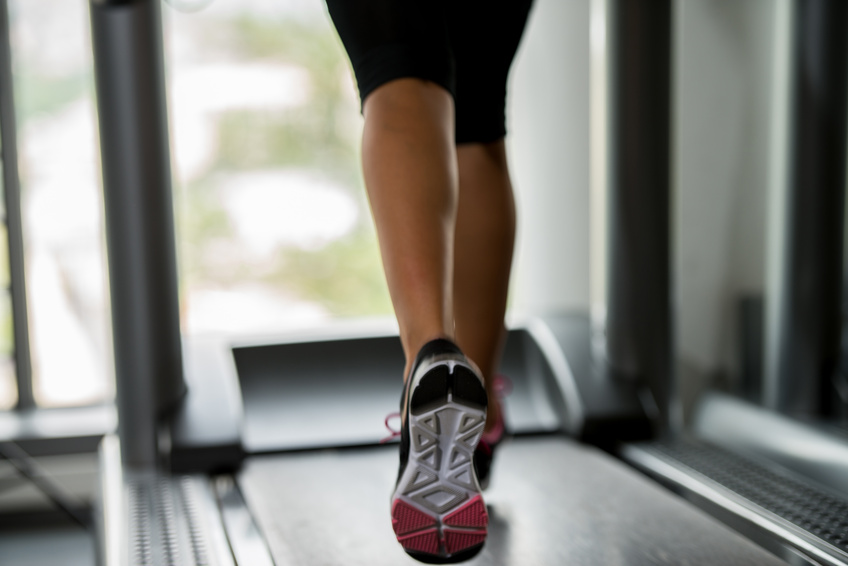- Calls to this hotline are currently being directed to Within Health or Eating Disorder Solutions
- Representatives are standing by 24/7 to help answer your questions
- All calls are confidential and HIPAA compliant
- There is no obligation or cost to call
- Eating Disorder Hope does not receive any commissions or fees dependent upon which provider you select
- Additional treatment providers are located on our directory or samhsa.gov
Hypergymnasia – The Eating Disorder that Isn’t

What is Hypergymnasia?
Not that I would have admitted it then, even while down on the cold floor of the gym surrounded by strangers who looked both concerned and horrified after I had collapsed yet again during an intense workout, but I was a living textbook example of hypergymnasia, also known as “exercise bulimia”, and “anorexia athletic.” The signs were all there:
- I was skipping out on work and just about every other function or commitment in order to go to the gym, yet again, and get in my hours of daily exercise.
- I continued to go back to the gym even when sick, including straight from the hospital following treatment for fainting during a workout that caused me to bang my head on a rowing machine near the Stairmaster I’d fallen off of.
- Isolating myself from everyone and especially those who questioned what I was doing or didn’t believe in my cause to get thin.
- Not noticing the 50+ pounds that I had managed to drop in a short time from eating next to nothing and working out to burn anything I did consume.
There seems to be a little more awareness about hypergymnasia these days. Back then I felt as though I had found some sort of loophole in the whole eating disorder thing. I wasn’t a fully-committed anorexic since I did have the odd day of eating and even bingeing on all the stuff that one tries to avoid when trying to lose weight. And though I did use laxatives and purging on the occasion, it wasn’t something I was doing on the regular or felt the compulsion to do like bulimics.
Instead, whether on a day where I consumed little more than some dust and a Diet Coke or one spent stuffing a Big Mac combo down my throat when temptation got the best of me, I would run, stair-climb, row, or aerobicize my calories away. This routine was perfect for the person who was compulsively and unhealthily trying to lose weight at record speed without wanting anyone to get wise. I was actually praised for my newfound love and commitment to exercise and this wonderful and healthy way of life that I appeared to be embracing. I was a chubby young woman who was finally doing what everyone thought I should be, so nobody thought to question or worry—at least not at first.
Not an Official Diagnosis Though A Very Real Problem
Though we have all kinds of names for it, hypergymnasia is not official diagnosis and is considered a subset of bulimia and other eating disorders. Some starve and exercise compulsively while others use it as a way of getting rid of calories after bingeing rather than purging, while others do both. With hypergymnasia, the need to exercise takes over to the point where it feels like an obligation and is no longer something enjoyable, even if you started out genuinely enjoying exercise.
This is why it’s also referred to as ‘obligatory exercise.’ Take it from someone who can still practically smell the euphoria—you do get a drug-like high from over-exercising even long after it has started to feel like an obligation. Fleeting as the euphoric feeling may be, it’s strong enough to keep one going back for more even as their bodies are wasting away.

Along with the physical consequences, there’s also the mental turmoil, like the constant guilt that comes from feeling like you’re not working out enough and the low self-esteem. And since isolation and withdrawing from the people and things you enjoy is a big part of it; loneliness and depression are also common.
One of the saddest points about anorexia athletica/hypergymnasia is that it can often start from being preoccupied with your health and wanting to lose weight or get fit for to be healthier or from wanting to improve as an athlete. It’s not always about poor body image or self-esteem issues—at least not in the beginning.
It Affects Everyone
According to the Eating Disorder Foundation, as many as 46 percent of 10 year-old girls are on a diet, fear getting fat, or are binge eating and there’s an increasing number of women in their thirties, forties, and fifties with eating disorders. More awareness about hypergymnasia and eating disorders is obviously needed. With little information and resources available along with society’s ongoing obsession with thinness and the assumption that there’s no such thing as too much exercise, it’s no wonder that children and adults of all sexes are literally working themselves to a pulp under the radar.
Adrienne is a freelance writer and author who has written extensively on all things health and fitness for more than a decade. When she’s not holed-up in her writing shed researching an article or off interviewing health professionals, she can be found frolicking about her beach town with husband and dogs in tow or splashing about the lake trying to master the stand-up paddle board.
Contributed by: Healthline
References
• Exercise Bulimia. ULifeline.org. Retrieved on February 27, 2014, from http://www.ulifeline.org/articles/401-exercise-bulimia
• Weiner, Ken, MD, FAED, CEDS. (2010). Too Much of a Good Thing? What You Need to Know About Compulsive Over-Exercising. Screening For Mental Health (SMH). Retrieved on February 27, 2014, from http://mentalhealthscreening.org/enews/overexercising.aspx
• Gavin, Mary L, MD. (2013). Compulsive Exercise. KidsHealth.org. Retrieved on February 27, 2014, from http://kidshealth.org/parent/emotions/behavior/compulsive_exercise.html#
• How Many People Have Eating Disorders – Frequently Asked Questions. (2013).The Eating Disorder Foundation. Retrieved on February 27, 2014, from http://www.eatingdisorderfoundation.org/EDFFAQ.htm
